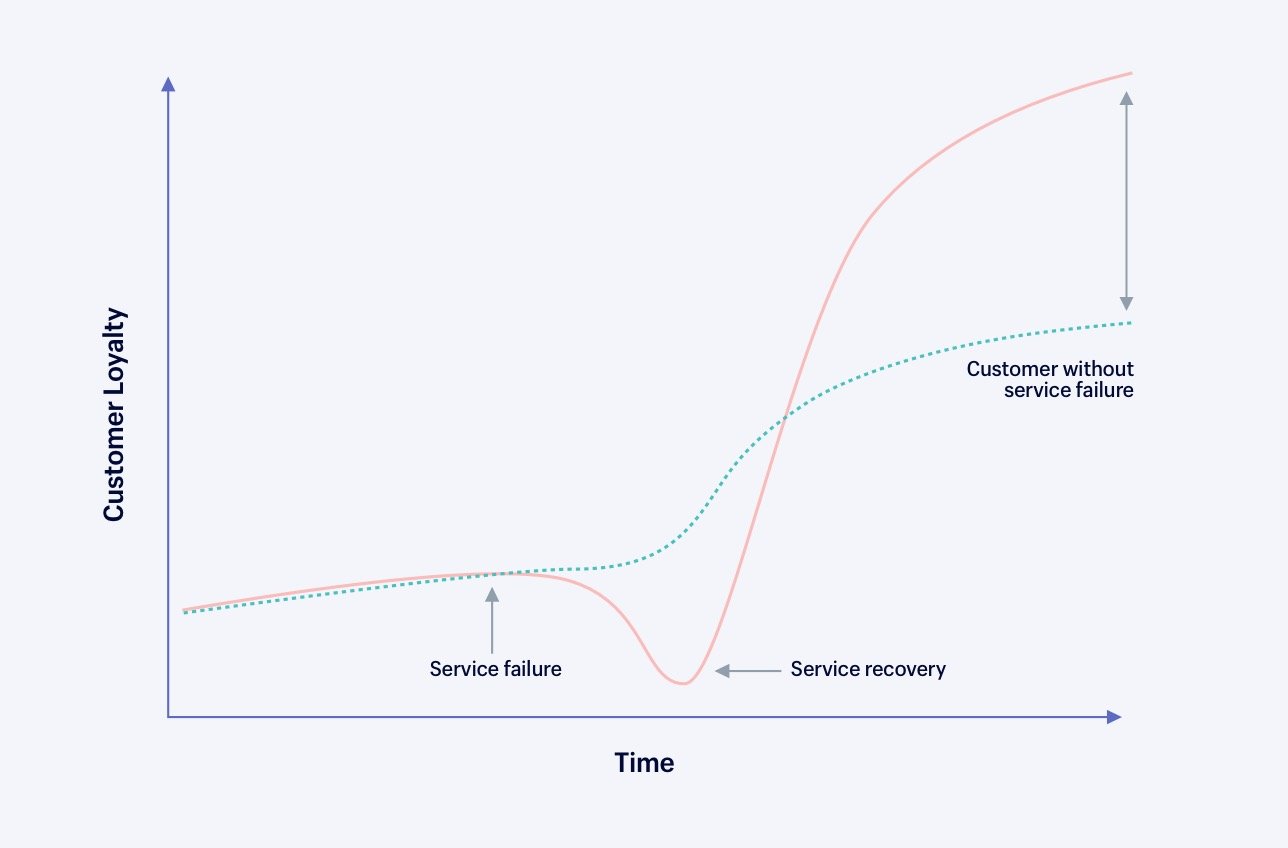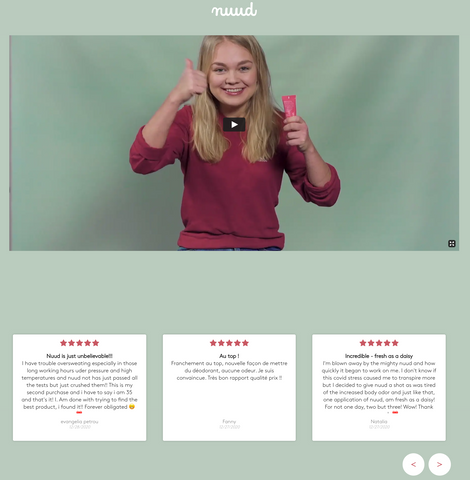Our view at Stack - Shopify has just about everything you need if you're looking to sell online. It excels with unlimited products, user-friendly setup, and 24/7 support. It offers 6,000+ app integrations, abandoned cart recovery, and shipping discounts up to 88%. Plus, it allows selling both online and in-person, scaling as your business grows.
Starting a business can feel a bit like plunging into the middle of the ocean, not knowing where to find the nearest island—all without a life raft.
The truth is, the eureka moment that leads you to a truly great idea is only the first of many important business milestones. The path from business idea to business plan to successful business is rife with uncertainty. So, how do you know if you’re heading in the right direction?
Sometimes the greatest comfort comes from knowing where the next port lies, even if it’s miles away. Below, you’ll learn important milestones that most new business owners can expect to encounter in their first year.
Milestones, in this case, are the results of a set of actions, rather than a checklist for starting a business. Some are cause for celebration, while others are challenges to overcome. Either way, if you’re hitting these business milestones, your journey is on the right course.
Business milestones: first month
1. You create your monthly budget
Before diving into marketing and sales efforts, it’s important to establish a clear financial plan. Create a monthly budget to manage your finances efficiently and set spending limits. This will help you allocate funds for your business activities and milestones throughout the year.
Key components to include in your budget:
- Estimated revenue
- Fixed and variable costs
- One-time expenses
- Allowance for unforeseen costs
- Projected profits (or losses)
By creating a budget early on, you’ll have a better understanding of your financial constraints and opportunities as you pursue other first-month milestones.
2. Your first paid marketing effort generates positive ROI
Congrats—you’ve launched your store! Now what? Your single business objective this month is to discover a repeatable and profitable approach to marketing.
For most companies with zero brand recognition, the fastest way to get noticed and start acquiring new customers is to launch a paid marketing campaign. The good news is that many paid channels allow you to pay per click, and you can start with a budget as low as $100.
The key is to not give up after one or two failed ads. Keep iterating and testing your ads until you’ve found the right formula of visual and copy to engage your target audience. It’s out there. And while there’s typically a lot of upfront work behind a profitable paid advertising campaign, it can run autonomously in the background once it’s set up.
Another quick way to get your product or brand in front of a relevant audience is by paying someone with an existing following to promote it for you. Influencer marketing (through Instagrammers, YouTubers, bloggers, etc.) has become a popular form of online advertising.
The success of influencer marketing involves finding the right influencers to promote your business. The challenge is identifying those who have an active, engaged following that would be interested in your product, as well as the ability to create content that reflects well on your brand.
Influencer marketing works especially well for trendy products (fashion, food, tech, for example) or those that benefit from a little hands-on demonstration.
💡 In-depth guides on paid marketing
3. Your first sale to a complete stranger
Your next milestone is making your first sale to someone completely outside your family and social circle. Your first real sale can give you invaluable feedback on your purchase experience, marketing tactics, and more.
Fortunately, there’s a lot more science than art (or luck) to making your first sale. For starters, you’ll need to set up your online store and actually start selling. This sounds obvious, but lots of first-time business owners get caught up trying to perfect their storefront before hitting publish, whether it’s overanalyzing their color palette or second-guessing pricing. Don’t get stuck picking out new shoelaces before going on your first run.
Instead of guessing what your audience wants, spend time experimenting with marketing strategy and tactics as soon as possible. As mentioned above, paid advertising is a straightforward way to get in front of a target audience and gain data you can use to assess whether you’re on the right track.
Use the first sale opportunity as a way to forge a bond with a real, bonafide customer. Send them a personal note of appreciation, and don’t hesitate to ask for feedback. If it’s positive, you could even ask if they’d be willing to provide a testimonial for your store or another public recommendation engine.
💡 Learn how to target audiences with paid advertising to get your first sale in 30 days or less.
Business milestones: first three months
4. Your first support snafu
While company milestones worth celebrating are great, setting milestones for failure is just as important. Making sales that let consumers down is never fun. Nevertheless, good customer support isn’t about always being right: it’s about being willing to make it right. An unhappy customer is an opportunity to create a stronger relationship by providing superlative customer service.
According to the service recovery paradox, there’s evidence that if you can recover with a positive support experience, you’ll create even more goodwill and gain customer loyalty.

Traditional customer support books will tell you to be empathetic and apologize. But these days, an “I’m sorry” can feel like a dead end. Instead, start from a place of customer advocacy. This requires spending time understanding the full issue, exploring solutions, and proposing next steps to rectify the situation.
That said, the best way to manage angry customers is to prevent issues with self-serve elements. That might involve displaying an order status page for customers to track packages, sending automatic shipping alerts, or adding an FAQ page.
Always give customers a way to contact you as well. Forms are acceptable, but a live chat channel is far more personable.
👀 TIP Read our philosophy and guide to modern-day customer support, Customer Service 101: A Guide to Providing Stand-Out Support Experiences. After that, layer on proactive customer support to stop complaints before they happen.
5. Your first testimonial
There’s no better advertising than a genuine, positive review from a real customer. Best of all, it’s free.
No matter what you sell, today’s shoppers are more skeptical of marketing claims than ever, which makes candid testimonials and product reviews an essential part of any marketing strategy. This is especially the case for high-ticket items like mattresses, or products that can’t easily be returned or exchanged, like deodorant.
Nuud, a Dutch deodorant maker, showcases happy customers on its homepage through a carousel and video montage of positive reviews. For many website visitors, this gives them the confidence they need to hit the Buy button.

💡 Automate your testimonial collection! Check out our guide to unlocking customer testimonials, with tips for automating email requests, social media outreach, surveys, and more.
If you’re a Shopify user, you can easily collect and import testimonials to your site with an app:
- Yotpo. Collect product reviews, photo reviews, site reviews, and ratings (free plan available).
- Loox. Add product reviews with photos (free trial).
6. Positive ROI from your organic marketing channels
Among marketing milestones, organic efforts (social media, SEO, content marketing) take longer to seed, but eventually, they should make up a sizable amount of your total marketing budget to keep costs sustainable. As Taylor Holiday, founder of Common Thread Collective, writes, “Fight the temptation to scale your paid spend independently of your organic demand. Your margin will disappear.”
“Fight the temptation to scale your paid spend independently of your organic demand. Your margin will disappear.”
That organic acquisition work starts in month one, and frankly, it never ends. The good news is that there are endless ways to attract target customers to your website, and the tactics are the same whether you’re seeking your first or your 100,000th customer. These include running contests on social media platforms, offering referral bonuses, and partnering with influencers.
💡 Whether you’re trying to attract your first or your 100,000th customer, this guide to customer acquisition is packed with ideas.
7. Outsource something outside of your core competency
Few of us are experts in every aspect of starting and growing a business. Within your first month, you’ll likely learn what you’re good at—and what you’re not (turns out, logos are hard!). That’s why one of your big company milestones should be looking outside the company for certain tasks.
This is the time to focus on finding product-market fit, so if you find yourself spending more time pushing pixels than talking to loyal customers or exploring a new marketing strategy, you may want to turn to a professional who’s done this before for help. Experts exist across a wide range of fields, from web development to business strategy, and there’s usually one to fit any budget.
💡Not sure where to start? Explore our marketplace of Shopify-vetted experts who specialize in web development, marketing, branding, and more.
Business milestones: first six months
8. You start seeing orders daily
Of all the business plan milestones, this one is probably the most variable depending on what you sell. The real outcome we’re aiming for here is product-market fit.
How do you know if you’ve achieved an effective business model with product-market fit? There’s no end to formulas, templates, and doctrines about the ultimate business model, but at its core, you know you’ve found it when you can “feel” your product being pulled by the market.
You know you’ve found product-market fit when you can “feel” your product being pulled by the market.
For example, you’ll start seeing people talking about your brand and referring your brand to others. You’ll start building a loyal customer base and strong reputation in the market. You’ll spend more effort fulfilling orders and answering support questions than you are trying to “pull” customers to you.
You’ll know you’ve nailed product-market fit when you receive a steady stream of orders, whether that’s once a day for low-ticket items, or weekly for higher-ticket items.
You’ll also see positive changes to a few key metrics, which you can find in your Shopify reports:
- Repeat purchase rate. This is the number of repeat customers who’ve made more than one purchase, divided by your total number of unique customers. The higher this number, the more you’re retaining. Hooray! (Pro tip: if you have a lot of repeat customers, it might be worth considering a subscription business model.)
- Customer acquisition cost. This is the amount you spend on marketing strategy (paid ads, design, branding, etc.) divided by your total number of unique customers. The lower this number, the more efficient your marketing plan is.
- Lifetime value. The total profit you’ll make from your average customer during the time they remain a customer. This is important to know, because LTV is directly linked to a profitable business model. A company with high overall LTV will be able to spend more to attract customers and will have a higher margin.
Business milestones: first year
9. Your first shopping spike
Shopping spikes are exciting, adrenaline-filled affairs—unless you aren’t prepared for them. Whether it’s due to a flash sale, Black Friday Cyber Monday, or another seasonal trend, a spike can increase sales temporarily or grow your business over the long term, depending on how well you prepare.
From stocking up on extra shipping supplies early to hiring temporary help and creating a seasonal forecast, there typically are months of planning that go into ensuring a smooth shopping experience during expected spikes. Customer support can also get flooded during this time, so take steps to proactively anticipate expected inquiries as much as possible. This will make shoppers feel understood and improve customer satisfaction.
10. Your first employee
As your business begins to gain traction, it’s time to think about expanding your team. Hiring the right people can help accelerate your growth and bring in diverse skills and perspectives. Here are some key points to consider:
- Identify roles that will have the most impact on your business growth
- Develop a clear job description and list of required skills for each position
- Consider both full-time employees and freelancers/contractors based on your needs and budget
- Conduct thorough interviews and check references to ensure a good fit
- Start building your company culture from these initial hires
Remember, your first hires will help shape your company’s future, so take the time to find the right people who align with your vision and values. Be prepared to offer training and development opportunities so they can help push your business forward.
11. You outsource an “always-on” function of business
Business ownership for the long-haul is all about balance. Sure, there will always be unexpected weekend shifts and late nights, but at this point, your goal should be fewer and fewer of those. That’s where outsourcing comes in.
If you’re ready to hire your first employee to handle a part of your business, like shipping and fulfillment, go for it! If you’re not quite ready for employees, but find yourself doing lots of routine tasks, like bookkeeping or having to manage social media, you could explore the increasingly popular virtual assistant route.
Learn to let go of certain functions so you can focus on making even more of an impact elsewhere, whether that’s product development, media engagements, branching overseas, etc. Or maybe simply so you can spend more time with the family and take care of yourself. And that leads us to our final milestone …
12. You take a vacation 🏖️
After months of business milestones, both positive and negative, hopefully you’ll end up at a place where you can swim to shore, take a much-needed break, and reflect on all you’ve accomplished in your first year as a business owner.
Illustration by Gracia Lam
Business milestones FAQ
What is a business milestone?
A business milestone is an achievement or challenge that illustrates how far your business has come. Milestones can be positive or negative, but they’re all important moments in the development of a successful business model and can lead to significant growth.
What are examples of business milestones?
Examples of business milestones include getting your first repeat customer, achieving positive ROI on organic marketing efforts, getting your first testimonial, and outsourcing your first business task or function.
How do you write business milestones?
- Define long-term goals. Identify your business objectives to guide your milestone creation.
- Break goals into SMART milestones. Divide main goals into Specific, Measurable, Achievable, Relevant, and Time-bound targets.
- Prioritize and sequence milestones. Arrange milestones in order of importance and logical progression.
- Assign responsibilities and resources. Delegate tasks and allocate necessary budget, personnel, and tools for each milestone.
- Set realistic timelines. Establish achievable deadlines for each milestone, considering available resources and potential obstacles.
- Determine key performance indicators (KPIs). Identify metrics to measure progress towards each milestone.
- Create a visual roadmap and review regularly. Develop a graphical representation of your milestones and periodically assess and adjust as needed.
What are milestones in a marketing plan?
Marketing milestones include launching a website, publishing your first paid advertising campaign, earning your first customer who isn’t family, and partnering with an influencer or affiliate marketer.
If Shopify is of interest and you'd like more information, please do make contact or take a look in more detail here.
Credit: Original article published here.
